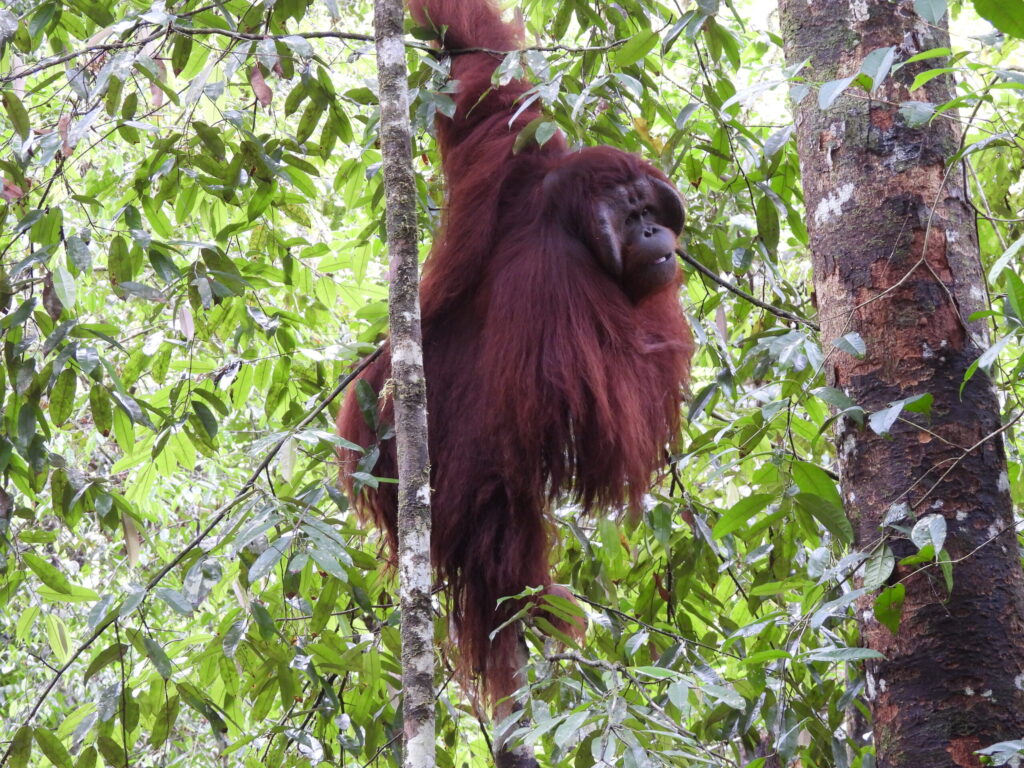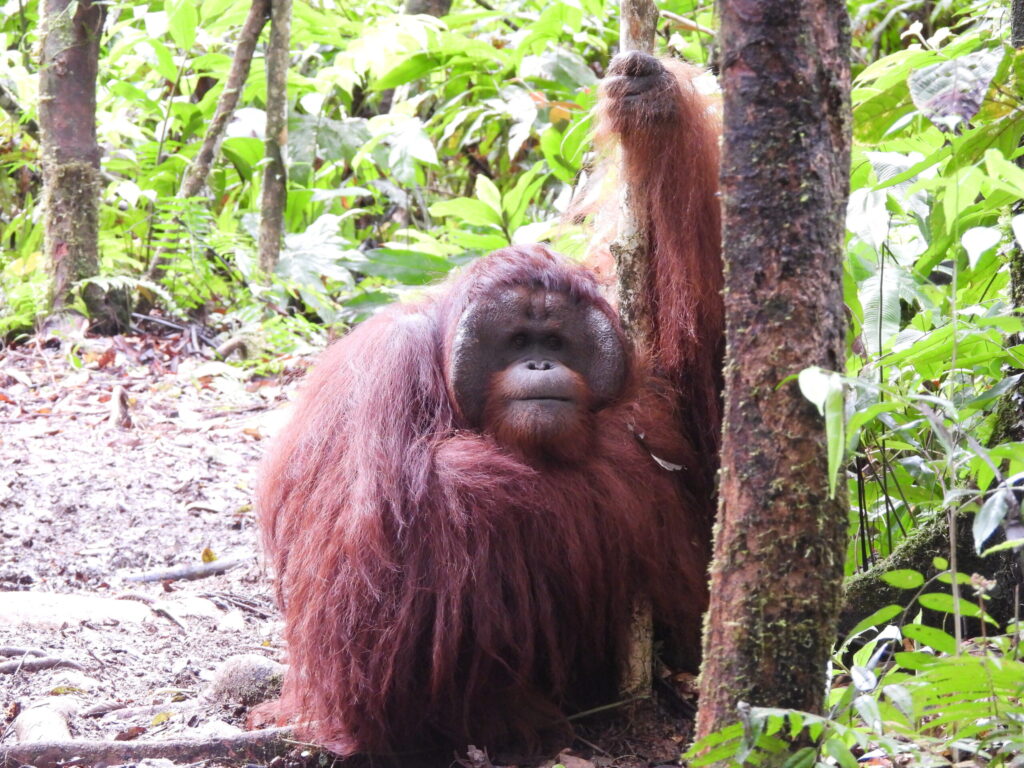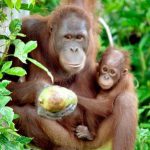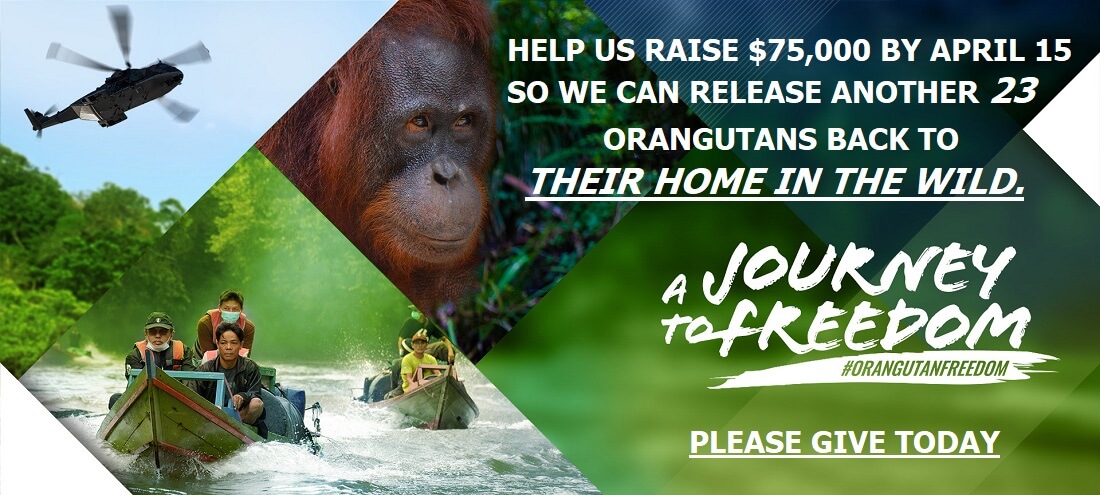A CALM ADAPTATION TO THE WILD

Do you remember Sie-Sie, the orangutan who was released into the wild last April? Unlike most orangutans who immediately climb trees or quietly distance themselves after release, Sie-Sie reacted with aggression. He showed signs of stress due to the long journey to the release site. In the following, learn more about his aggressive behaviour and find out how he is doing today.
Aggressive reactions are not uncommon in wildlife releases, especially in dominant individuals like Sie-Sie. Environmental changes, disruption of routine, and travel stress can trigger strong responses.
Despite her initial aggression, the technical team successfully carried out the release by avoiding direct contact. But that was only the beginning of Sie-Sie’s long journey of adaptation in the wild.
A Slow Start
In the early weeks post-release, Sie-Sie spent most of his time on the ground. He did not build nests in the trees, instead making simple nests from leaves and twigs between roots and shrubs. He even consumed leftover food from the release process.
Nonetheless, he showed promising signs of survival. He foraged for wild food like palm hearts, termites, and young leaves. Although he remained reluctant to climb, he gradually began to recognise food sources in his surroundings.
Finding His Comfort Zone
By the end of the first month, Sie-Sie began exploring areas around the release site. He didn’t travel far but had clearly found a “comfort zone”—an area near a river where the Post-Release-Monitoring team often saw him relaxing, drinking, or simply sitting and staring at the flowing water.
Interestingly, although he occasionally climbed trees to collect branches, he still preferred resting on the ground. Sie-Sie’s lifestyle resembled that of a relaxed orangutan—calm but alert to his surroundings.

In the early weeks post-release, Sie-Sie spent most of his time on the ground and even built simple nests there.
Positive Adaptation Changes of Sie-Sie
Over time, Sie-Sie’s aggression began to subside. Where he once reacted strongly or lashed out when approached, he now prefers to avoid contact—a positive sign in the adaptation process.
His eating patterns stabilised, and he started expanding his range, although still within a limited radius. Sie-Sie’s daily activities include foraging for palm hearts and Ficus fruits, building nests from branches (still on the ground), wandering around the site, occasionally climbing trees, and resting near the riverbank.
Rewilding Sie-Sie: A Journey That Takes Time
Sie-Sie may not be a bold explorer or a skilled tree climber, but he’s slowly finding his own rhythm. By the end of the observation period, the team still saw him near the release point. However, toward the end of the month, his traces became more difficult to detect. He no longer appeared at the regular observation spots, yet there was no sign that he had gone far. Most likely, he began venturing into more hidden areas—an encouraging sign in the context of rewilding.
Sie-Sie may not yet be a fully wild orangutan, but he has already developed key survival skills: he no longer relies on humans, he can find food on his own, and he knows how to keep her distance. His adaptation journey is a reminder that returning to the wild is not an instant process. Each individual has their own rhythm, and Sie-Sie has chosen a quieter, slower path—yet one that still leads toward the right direction: becoming a truly wild orangutan.





